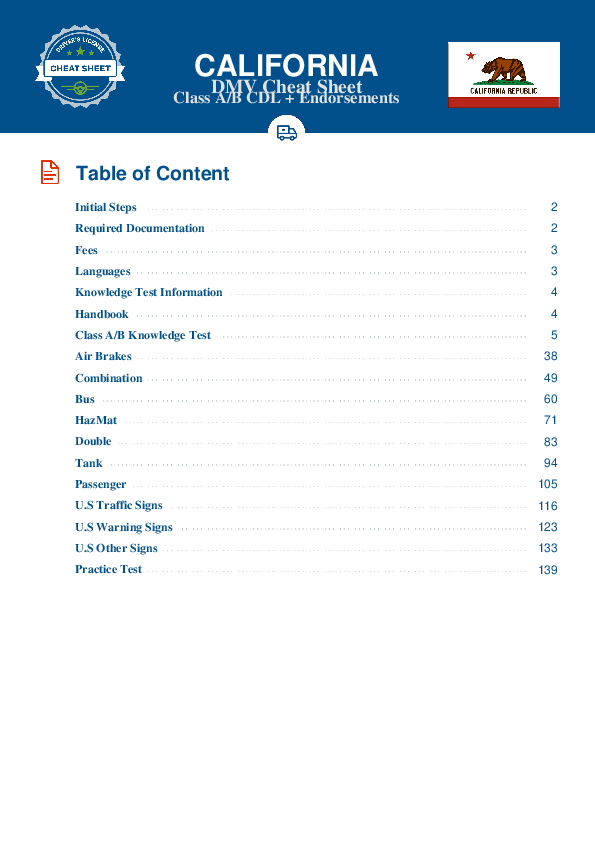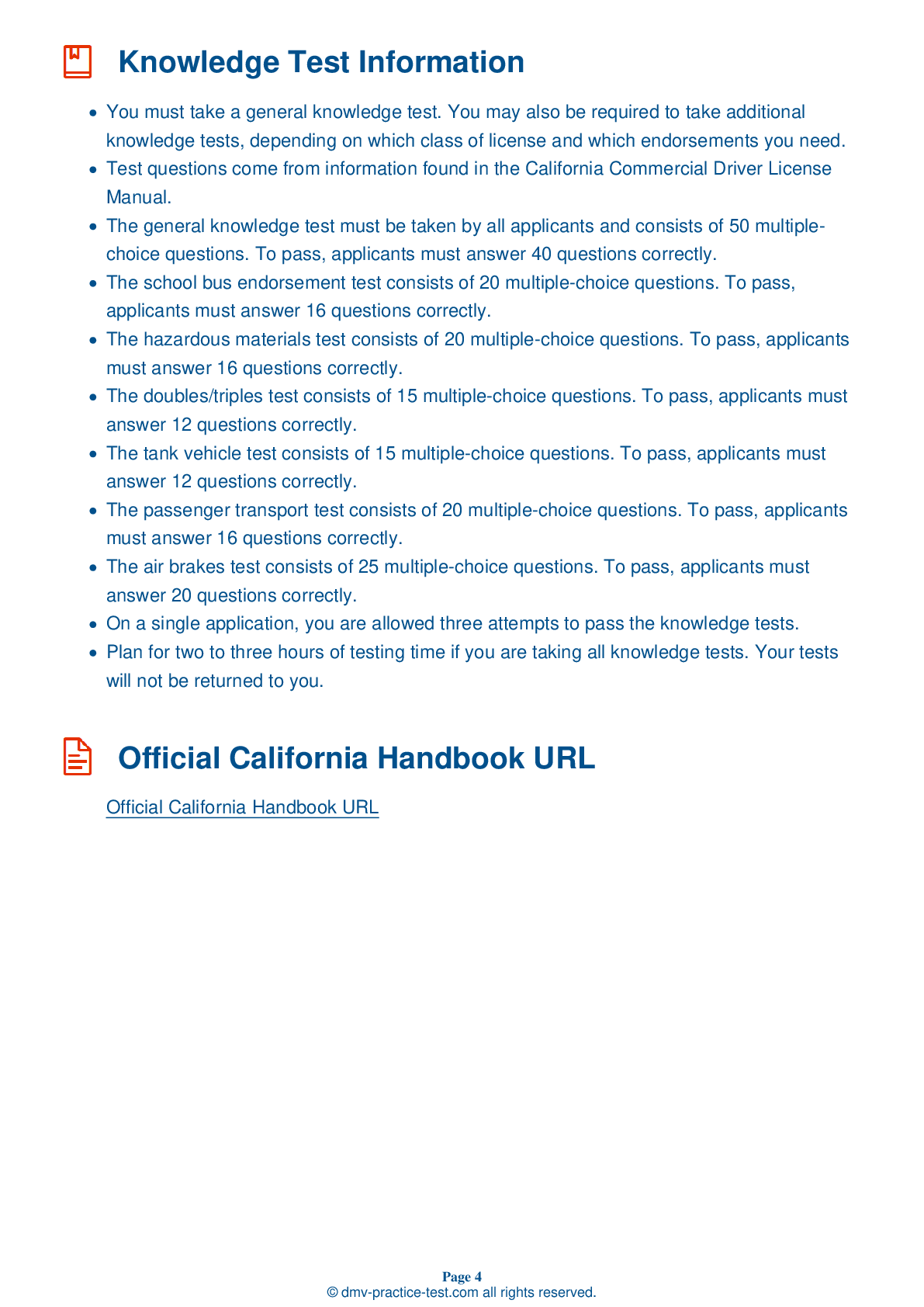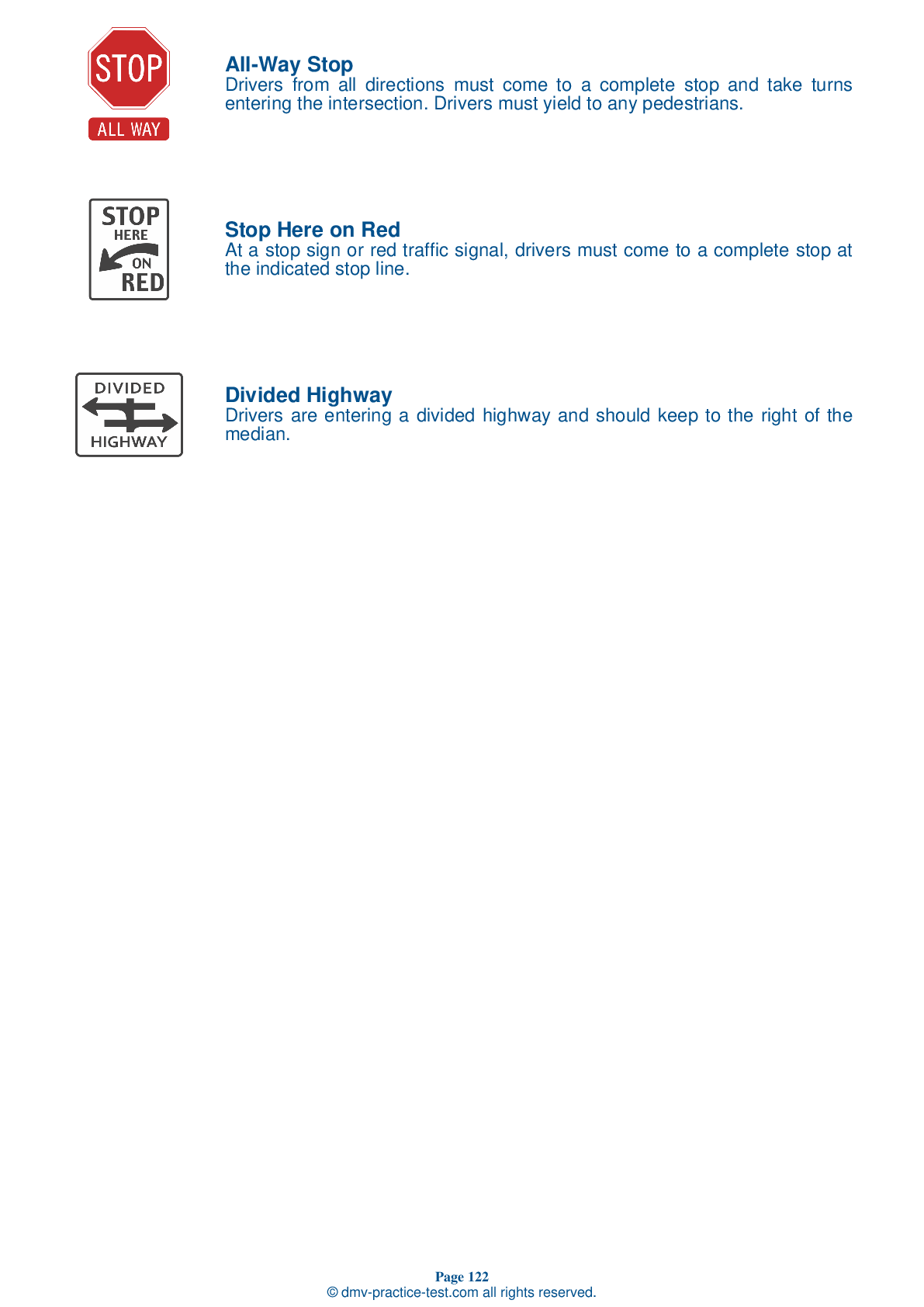Class A Driving Test | California 2025 #1 Page 6 of 7
Train for FREE online with our California class A license test. The official exam test consists of several obligatory parts, with all of them checking your knowledge of different blocks of road rules. If you need to obtain a CA CDL class A permit in 2025, practice as much as possible. Free sample tests published on our website will help you check and improve your knowledge and boost your grades. Please bear in mind that CDL class A requirements may vary from state to state.
36 . When pulled over to the side of the road, you should:
When stopped on the side of the road, be sure to turn on your vehicle's four-way emergency flashers, especially during times of lowered visibility. Place warning devices within 10 minutes of being stopped.
37 . Rough acceleration:
Rough acceleration can cause mechanical damage, so be sure to accelerate smoothly and gradually.
38 . Most heavy trucks with manual transmissions require ____ to change gears.
Most heavy vehicles with manual transmissions require double clutching to shift gears. Learning to effectively change gears by double clutching takes practice.
39 . A safety valve is set to open at ____ pounds per square inch (psi).
The safety valve protects air tanks and the rest of an air brake system from accumulating too much air pressure. The safety valve is usually set to open at 150 psi.
40 . As the driver of a truck carrying a load, you are responsible for all of the following, except:
It is the driver's responsibility to inspect their cargo; recognize overloading or poorly balanced weight; know that the cargo is properly secured and does not obscure the driver's view; and know that the cargo does not restrict access to emergency equipment. The driver is responsible for their cargo even if they were not the one who initially loaded and secured the cargo.
41 . Who may operate a vehicle that is transporting hazardous materials?
Only a driver with a hazardous materials endorsement on their CDL may operate a vehicle carrying hazardous cargo.
42 . When taking the basic vehicle control skills test, failing to exit your vehicle properly during any exercise will result in:
When exiting your vehicle during the basic vehicle control skills test, you must face the vehicle and maintain three points of contact at all times. If your testing vehicle is a bus, you must maintain contact with the handrail. Exiting the vehicle incorrectly may result in automatic failure of the basic control skills test.
See the exact questions that will be on the 2025 California DMV exam.
99.2% of people who use the cheat sheet pass the FIRST TIME
Lillian MCcranie explains how our CDL study guide was helpful in passing the exam and recommends it to everyone.
Cameron tells us how he purchased the CDL exam, and found it to be a useful tool which helped him pass the exam and find a job.



